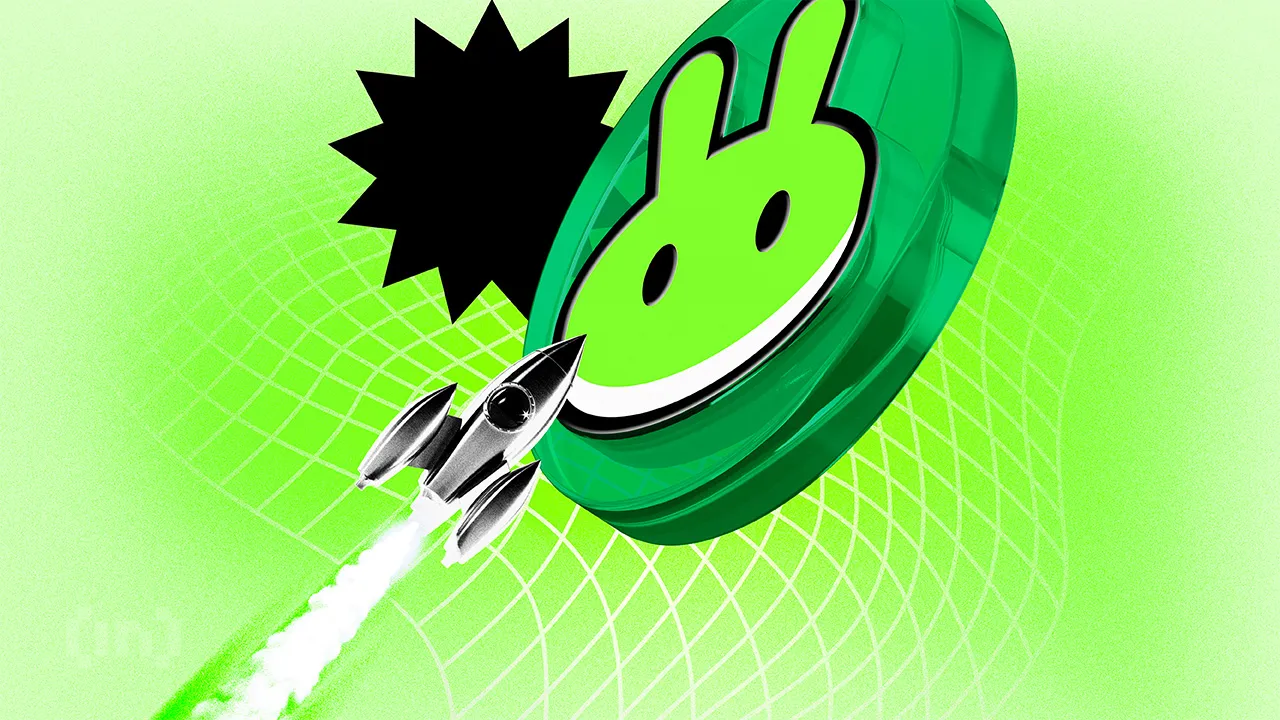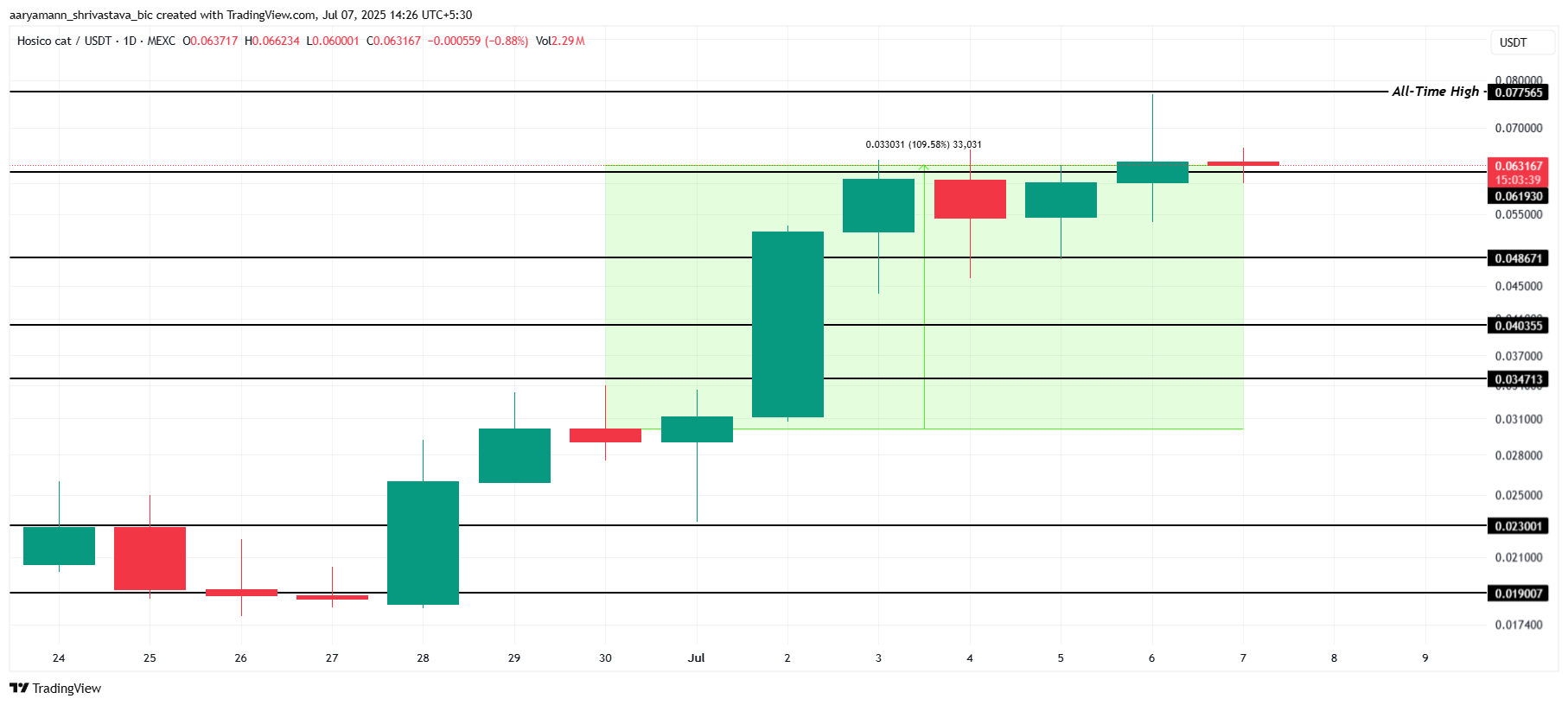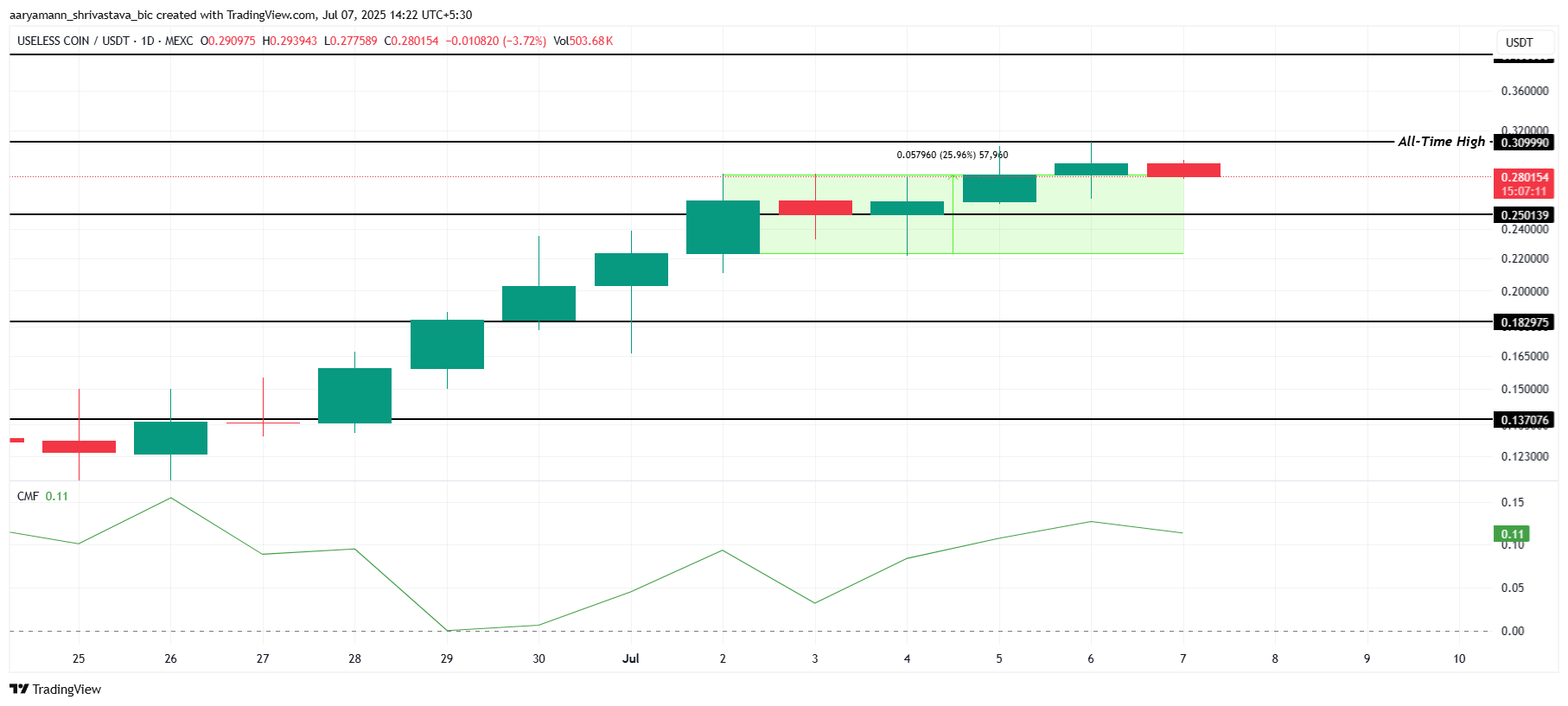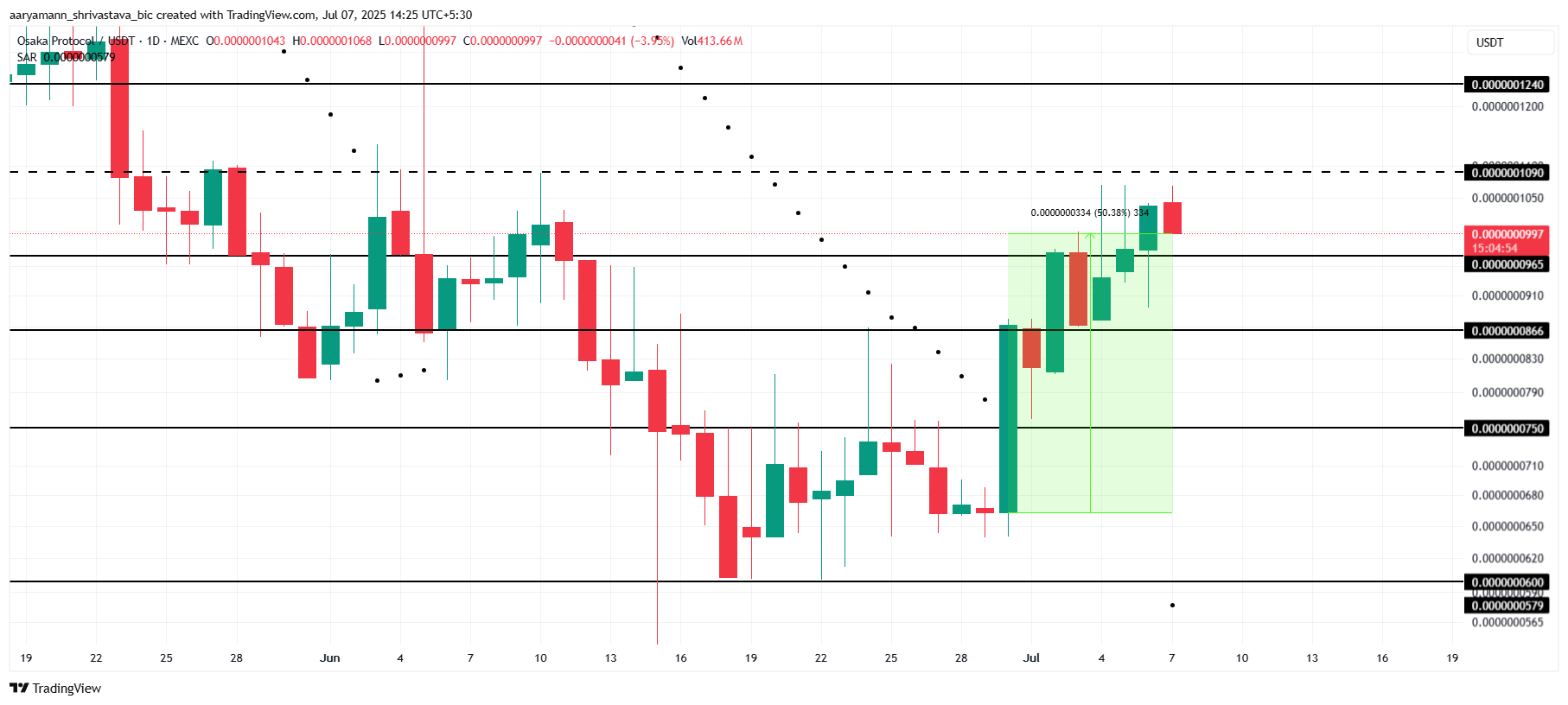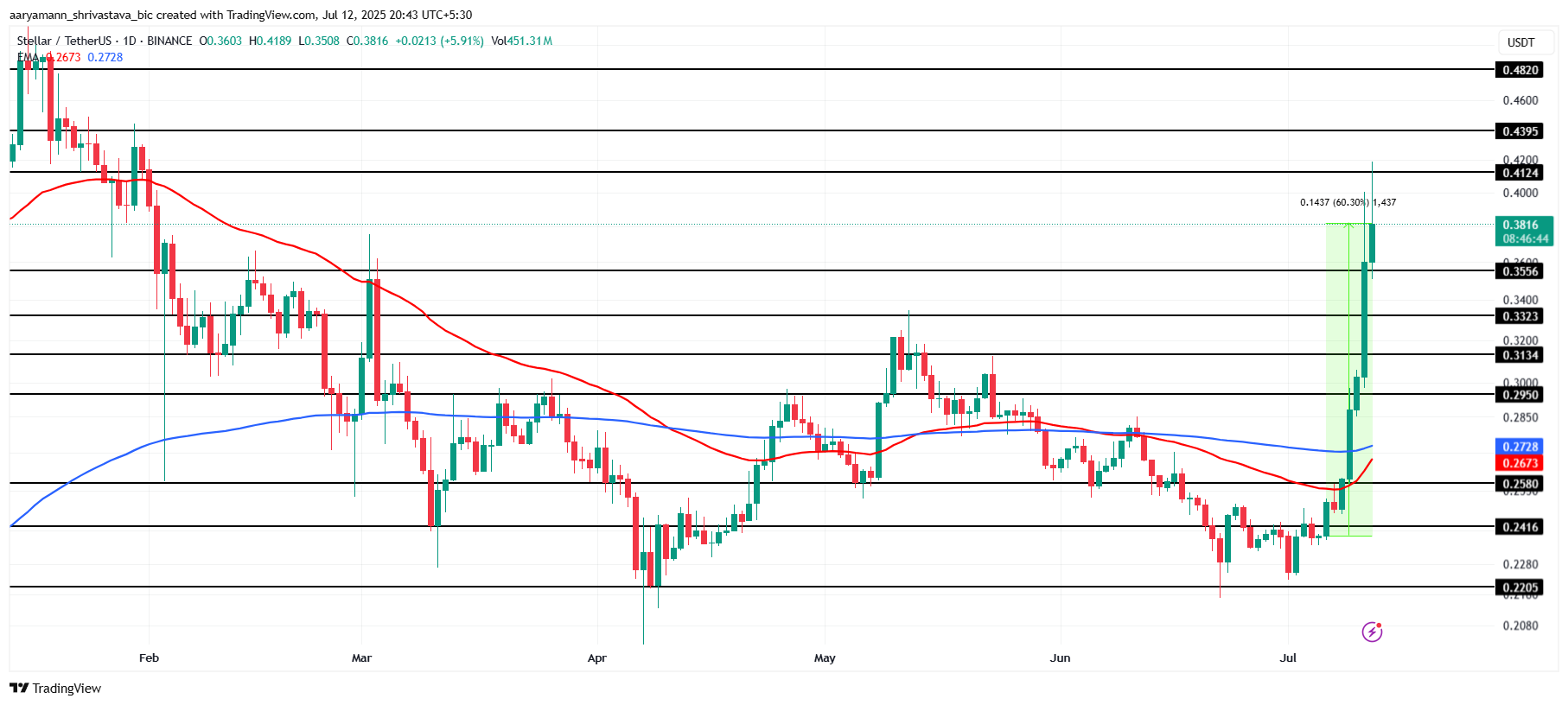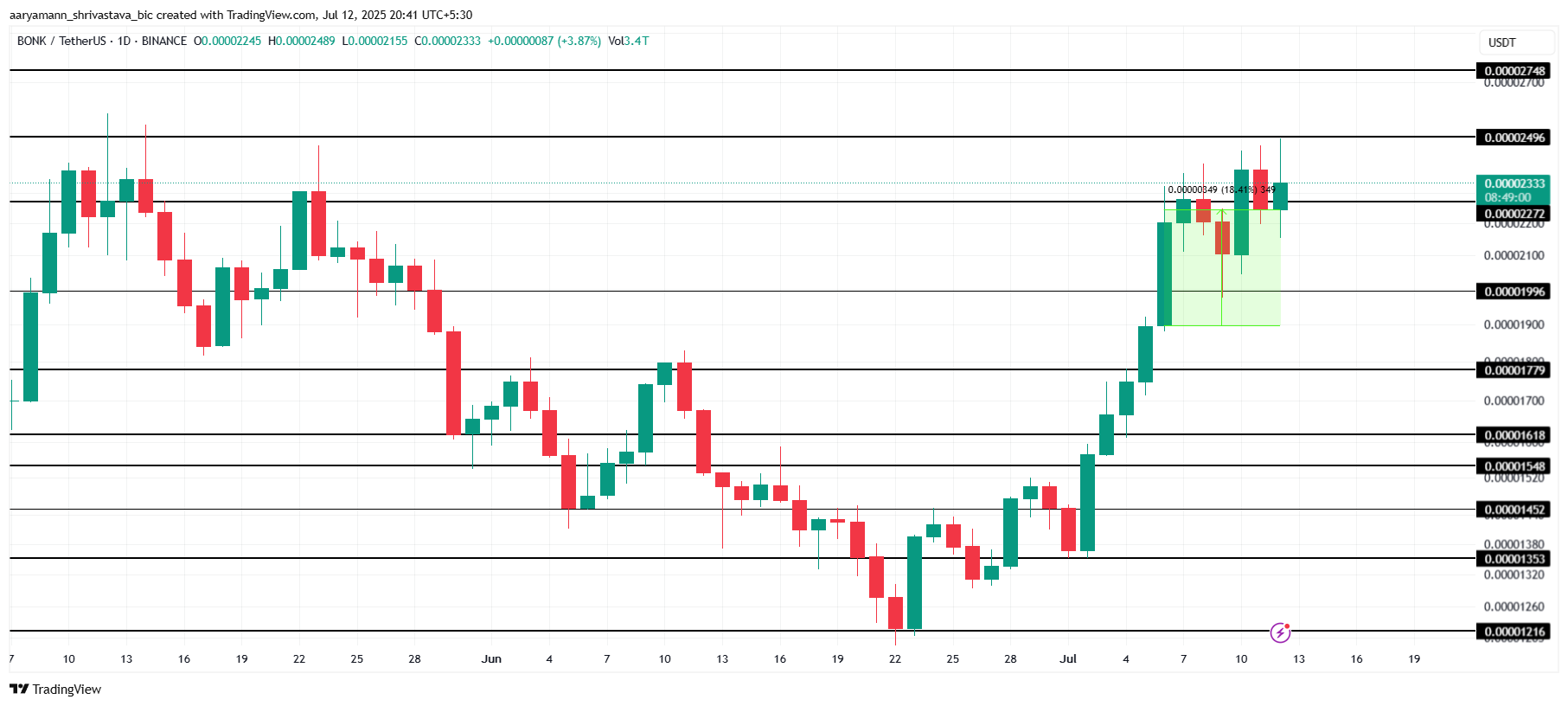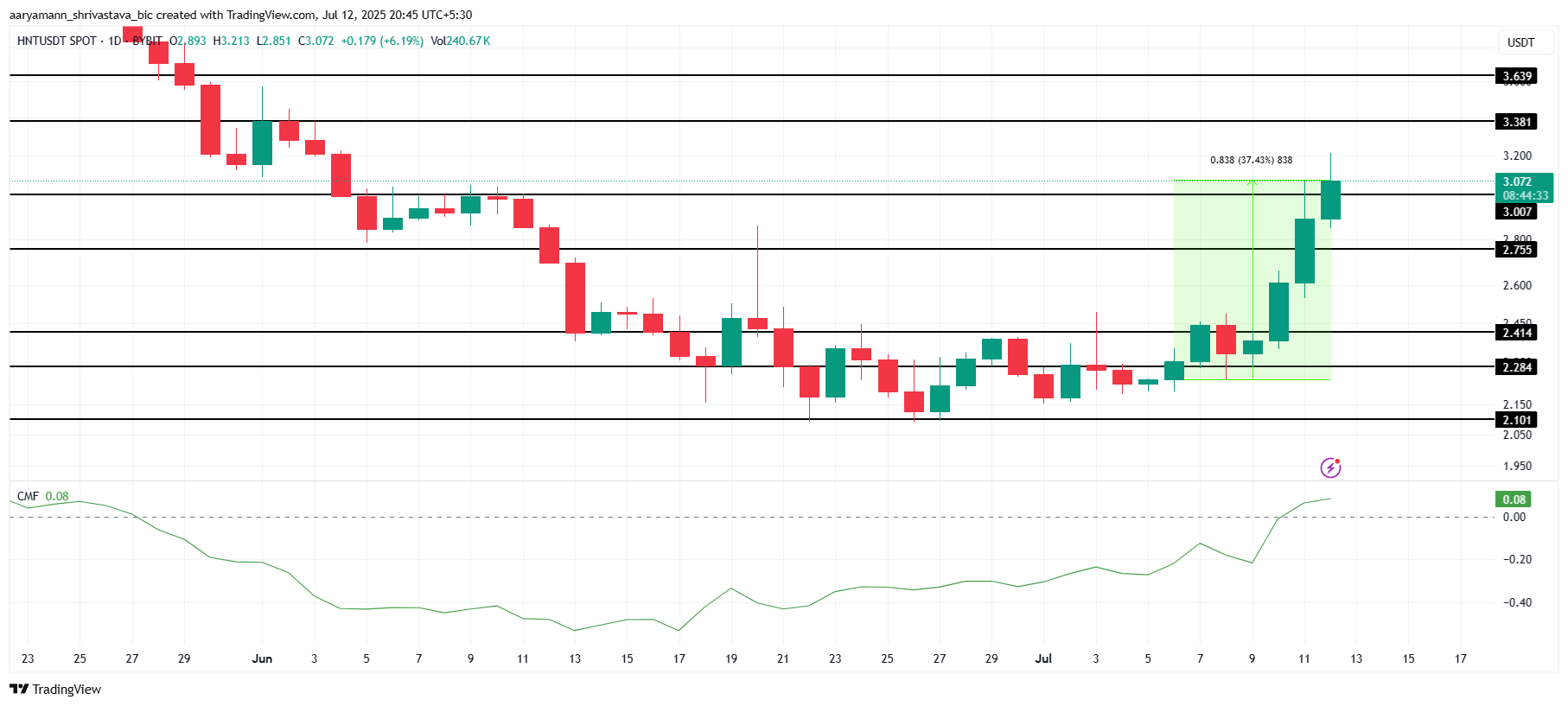The meme coin market has witnessed a steady resurgence over the past few weeks. Since June 23, the total market capitalization of memecoins has jumped by over 13%, reflecting a gradual regrowth.
Bonk.Fun, a Solana-based platform that allows anyone to create and trade meme tokens, is at the heart of this recent surge. Some meme coins within its ecosystem have posted significant gains over the past week, making them the ones to watch in the new trading week.
Useless Coin (USELESS)
Readings from the USELESS/USD one-day chart show that the meme coin has recorded new daily price peaks since June 5. Currently trading at $0.29, USELESS’ price has rocketed by over 740% in the past month.
The token’s rising Chaikin Money Flow (CMF) confirms that USELESS’ price rally is backed by significant buy-side pressure. This momentum indicator, which measures how money flows into and out of an asset, is at 0.13 and rising.
A positive CMF reading like this indicates strong bullish pressure in the market. If buying activity continues, USELESS could revisit its all-time high of $0.305.
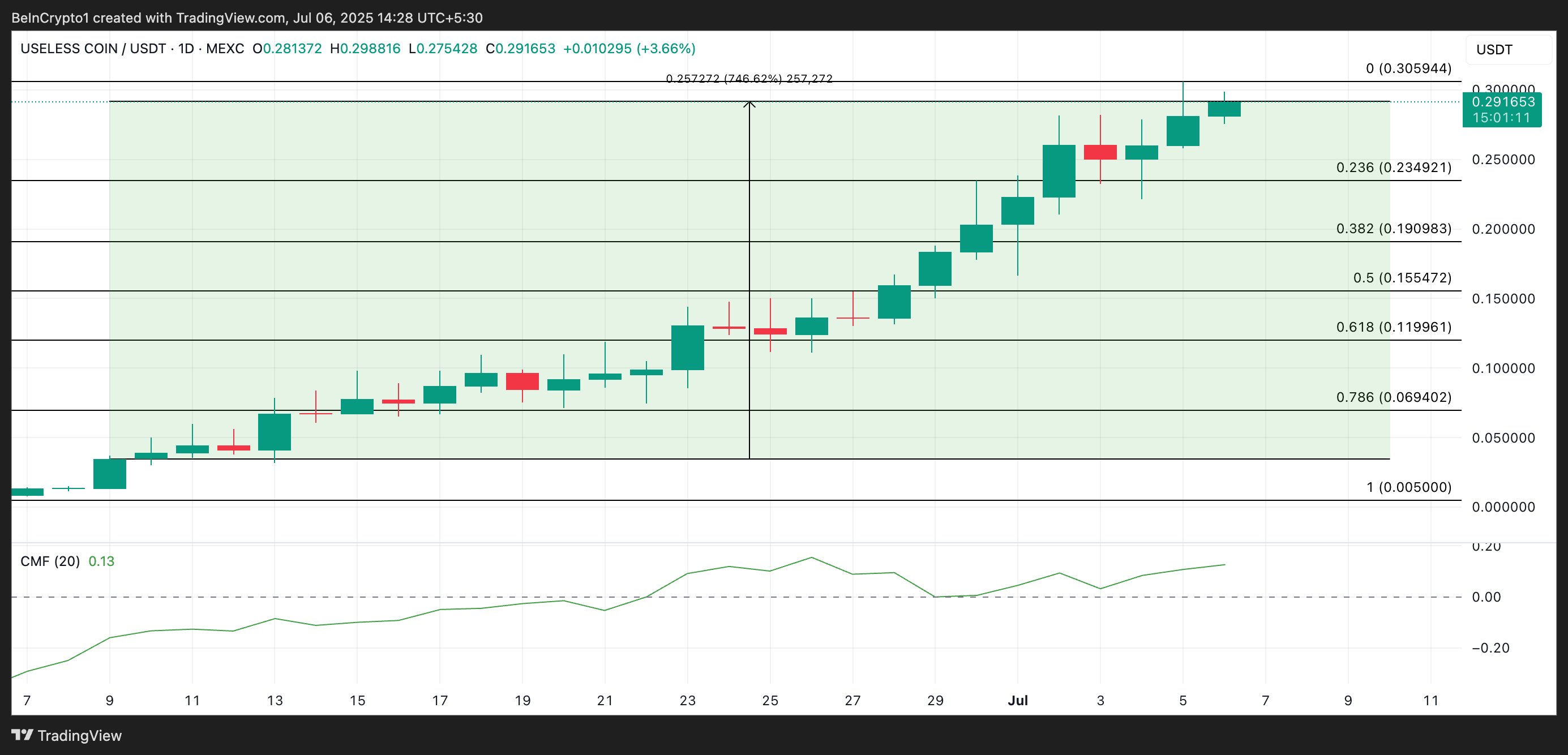
On the other hand, if profit-taking spikes, the token’s price could fall to $0.234.
HOSICO
HOSICO is another BONK ecosystem meme coin to watch out for this week. It is up 135% over the past week to trade at $0.067 at press time.
Despite the broader market’s pullback, HOSICO has logged 16% gains over the past 24 hours. For context, the altcoin has briefly traded at an all-time high of $0.069 during today’s session.
As of this writing, its daily trading volume has climbed 30% to reach $12 million. When an asset’s price and trading volume spike simultaneously, it signals strong market interest and increased trading activity. A rising price with high volume suggests that the uptrend is supported by genuine demand.
This combination is a sign of strength in the HOSICO market and could push its price to new highs in the near term. If token accumulation continues, HOSICO’s price could reclaim its all-time high and surge past it.
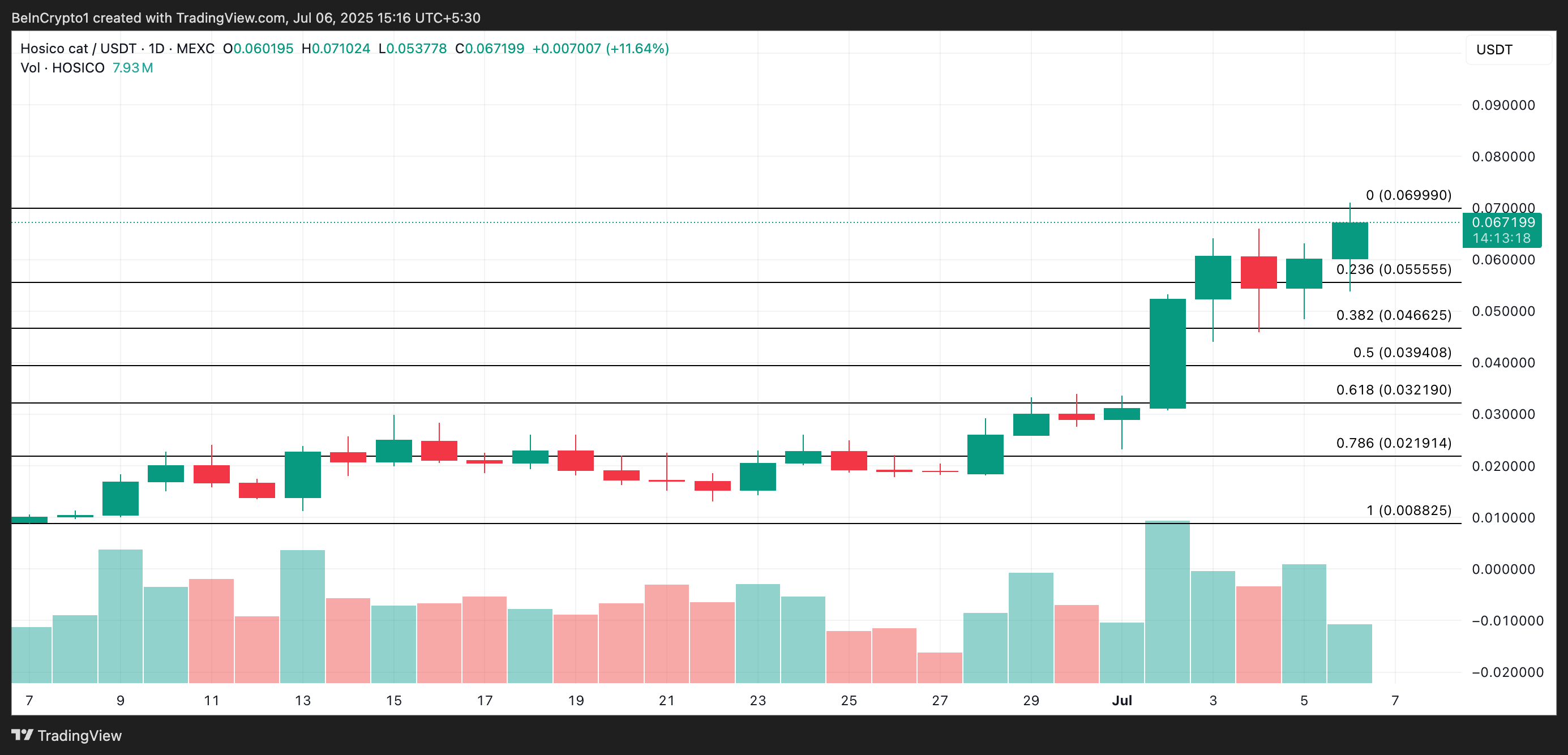
However, if demand falls, the meme coin’s price could dip to $0.055.
Let’s BONK (LetsBONK)
LetsBONK is up 239% in the last seven days, making it one of the BONK ecosystem meme coins to watch. As of this writing, the token’s Aroon Up Line is 100%. This means its uptrend is strong and not driven by speculative trades.
An asset’s Aroon Indicator measures the strength and direction of a trend by tracking the time since the highest and lowest prices over a given period. It comprises two lines: Aroon Up, which measures bullish momentum, and Aroon Down, which tracks bearish pressure.
As with LetsBONK, when the Aroon Up line is at 100, the asset has recently hit a new high, signaling strong upward momentum. If demand strengthens further, LetsBONK’s price could reach $0.127 and attempt to break above it.
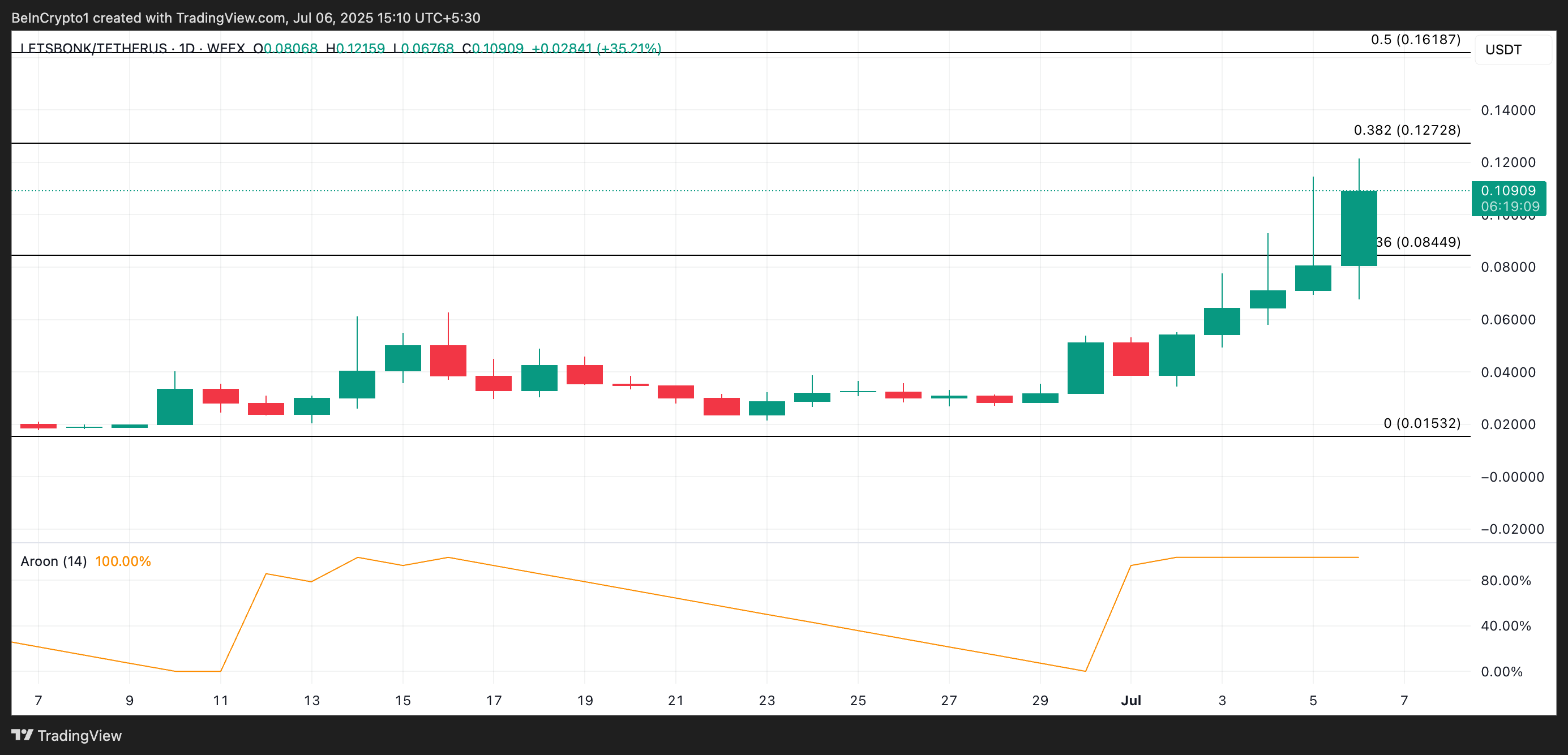
Conversely, the token’s price could dip to $0.084 if demand declines.
The post 3 Bonk Ecosystem Meme Coins to Watch This Week appeared first on BeInCrypto.

